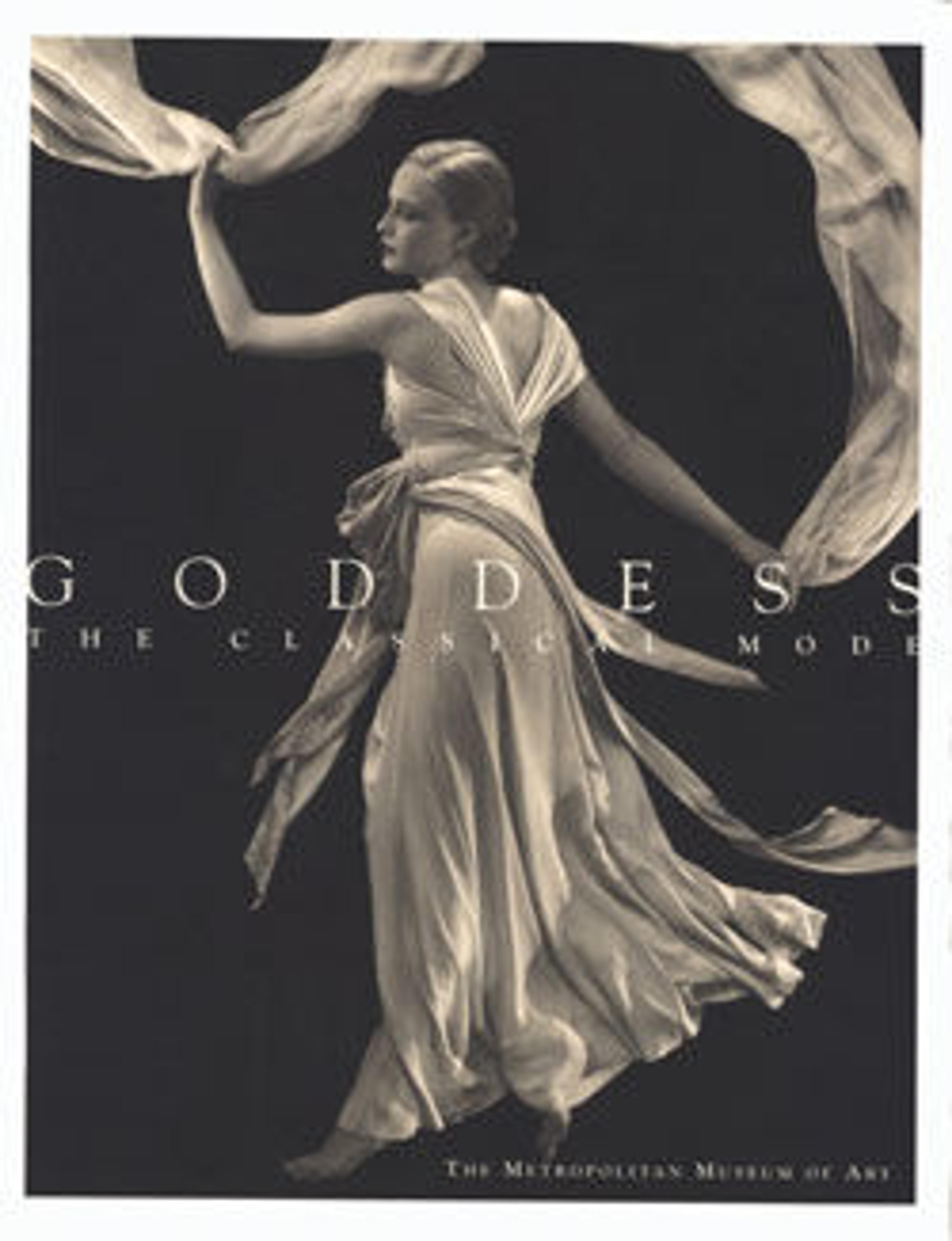Evening dress
By the twentieth century, the pleating and the girdled midriff of this halter gown were well-established references to classicism. But in this dress, Edward Molyneux introduced a subtle new detail to frozen wet-drapery by replicating the fluted neckline seen on many Greek and Roman statues. As in Hellenistic sculptures, Molyneux fanned open the pleats of his gown's deep décolleté neckline. But like most pleated gowns of the post-World War II era, these folds are carefully controlled and secured by loose stitches to a structured, though in this instance flexible, underbodice. The modernist movement's affinity with classicism is evidenced in fashion from the beginning of the twentieth century onward. Here, the designer manipulated an experimental fabric into forms evocative of the antique. However specifically situated classical dress was to its own time, references to Hellenic styles have been freed from fashion's chronology by a sense of the timelessness of the ideals of beauty they evoke. In choosing to cite the past while also experimenting with a fabric of the future, Molyneux aligned himself with designers for theater and film, who costume imagined utopias past and future with the draped styles of the ancients.
Artwork Details
- Title: Evening dress
- Designer: Edward Molyneux (French (born England), London 1891–1974 Monte Carlo)
- Date: 1949
- Culture: French
- Medium: estron, rayon
- Credit Line: Gift of A. M Tenney Associates, Inc. and Tennessee Eastman Corporation, 1950
- Object Number: C.I.50.21.12
- Curatorial Department: The Costume Institute
More Artwork
Research Resources
The Met provides unparalleled resources for research and welcomes an international community of students and scholars. The Met's Open Access API is where creators and researchers can connect to the The Met collection. Open Access data and public domain images are available for unrestricted commercial and noncommercial use without permission or fee.
To request images under copyright and other restrictions, please use this Image Request form.
Feedback
We continue to research and examine historical and cultural context for objects in The Met collection. If you have comments or questions about this object record, please contact us using the form below. The Museum looks forward to receiving your comments.
